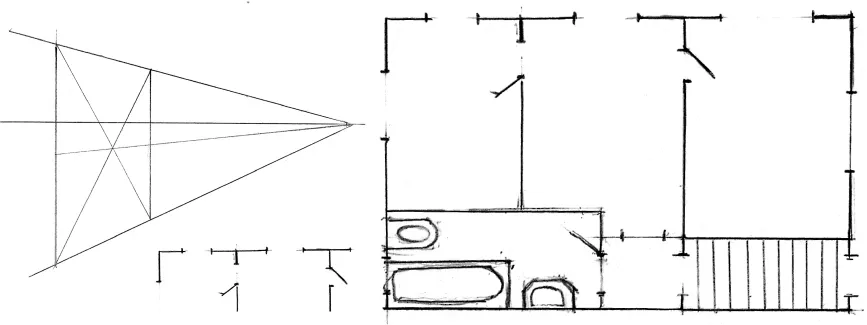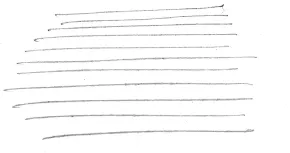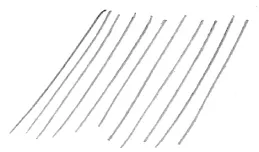
eBook - ePub
The Complete Book of Drawing Techniques
A Professional Guide For The Artist
Peter Stanyer
This is a test
Buch teilen
- English
- ePUB (handyfreundlich)
- Über iOS und Android verfügbar
eBook - ePub
The Complete Book of Drawing Techniques
A Professional Guide For The Artist
Peter Stanyer
Angaben zum Buch
Buchvorschau
Inhaltsverzeichnis
Quellenangaben
Über dieses Buch
The Complete Book of Drawing Techniques is intended for artists who are looking to expand their knowledge and understanding of materials and the wide range of available media. It will teach them about the characteristics of these media and materials and how to use them to get the required effect. With a unique combination of instruction and practice the book provides examples of the type of mark-making each medium produces. A range of projects then demonstrates effective ways of working with them. By the end of the book every budding artist will have enough knowledge and confidence to utilize the techniques they have learnt in a broad range of compositions of their own choosing.
Häufig gestellte Fragen
Wie kann ich mein Abo kündigen?
Gehe einfach zum Kontobereich in den Einstellungen und klicke auf „Abo kündigen“ – ganz einfach. Nachdem du gekündigt hast, bleibt deine Mitgliedschaft für den verbleibenden Abozeitraum, den du bereits bezahlt hast, aktiv. Mehr Informationen hier.
(Wie) Kann ich Bücher herunterladen?
Derzeit stehen all unsere auf Mobilgeräte reagierenden ePub-Bücher zum Download über die App zur Verfügung. Die meisten unserer PDFs stehen ebenfalls zum Download bereit; wir arbeiten daran, auch die übrigen PDFs zum Download anzubieten, bei denen dies aktuell noch nicht möglich ist. Weitere Informationen hier.
Welcher Unterschied besteht bei den Preisen zwischen den Aboplänen?
Mit beiden Aboplänen erhältst du vollen Zugang zur Bibliothek und allen Funktionen von Perlego. Die einzigen Unterschiede bestehen im Preis und dem Abozeitraum: Mit dem Jahresabo sparst du auf 12 Monate gerechnet im Vergleich zum Monatsabo rund 30 %.
Was ist Perlego?
Wir sind ein Online-Abodienst für Lehrbücher, bei dem du für weniger als den Preis eines einzelnen Buches pro Monat Zugang zu einer ganzen Online-Bibliothek erhältst. Mit über 1 Million Büchern zu über 1.000 verschiedenen Themen haben wir bestimmt alles, was du brauchst! Weitere Informationen hier.
Unterstützt Perlego Text-zu-Sprache?
Achte auf das Symbol zum Vorlesen in deinem nächsten Buch, um zu sehen, ob du es dir auch anhören kannst. Bei diesem Tool wird dir Text laut vorgelesen, wobei der Text beim Vorlesen auch grafisch hervorgehoben wird. Du kannst das Vorlesen jederzeit anhalten, beschleunigen und verlangsamen. Weitere Informationen hier.
Ist The Complete Book of Drawing Techniques als Online-PDF/ePub verfügbar?
Ja, du hast Zugang zu The Complete Book of Drawing Techniques von Peter Stanyer im PDF- und/oder ePub-Format sowie zu anderen beliebten Büchern aus Art & Techniques d'art. Aus unserem Katalog stehen dir über 1 Million Bücher zur Verfügung.
Information
Thema
ArtThema
Techniques d'artPart One
THE PENCIL
The different types of pencil, graphite, erasers.

INTRODUCTION
A pencil is a rod of graphite encased in a soft wood such as cedar, about six or seven inches long and exposed at one end. Crude forms of graphite pencils were first used as early as the 17th century. Before this, rods of lead or silver (known as silver point) were used as implements for making drawings. The modern form of lead or graphite pencil with its wooden encasement first came into use about the beginning of the 19th century.
The pencil fundamentally works by pushing or pulling the lead end across the surface fibres of the paper, which act as graters, breaking up into small flakes. Pressure on the pencil pushes the flakes of lead into the fibres of the paper to leave a mark or trace.
Graphite, a form of carbon, also known as mineral black or plumbago, is the major constituent of the modern pencil. The softness or hardness of a pencil varies depending on the amount of clay mixed with the carbon. The softest varieties of pencil contain little or no clay. Artists and designers will use a range of pencils, varying their choice according to the effect they are trying to achieve.
As the graphite is worn away by use, it can be repeatedly exposed. This is done by the action of sharpening the pencil using a purpose-made sharpener or blade. Sharpening and exposing the graphite should be regarded as an important act, because how it is done changes the type of mark you make with it. There are many ways of sharpening. A particular point produces a particular result. The artist should experiment to discover what is possible and how to make each type of pencil meet his particular needs at any given time.
The pencil can be used for a variety of purposes and, as with any material you use, you must be fully aware of its potentials and its limitations - different pencils and types are designed for particular uses. In the ensuing chapter some of these practices will be revealed with particular relevance to the appropriate pencil or graphite material.
The marks shown over the following few pages give some idea of the wide range of mark making possible. When you have looked at them, take each of the pencils in turn and see what marks you can make. Apart from being very stimulating and a way of opening your mind to new possibilities with your drawing, you will find it increases your ‘feel’ for the pencil itself. As artists, what we feel through the materials we use has an affect on what we produce, and familiarity with those materials is vital to a good outcome.
Materials and examples of marks

HARD PENCIL
Hard pencil marks have very little variation in the range of mark making. They only usually vary through a linear progression. Tone is usually made from a build up of crosshatch effects. Hard pencils are denoted by the letter H. As with soft pencils, they come in a range, comprising HB, H, 2H, 3H, 4H, 5H, 6H, 7H, 8H and 9H (the hardest).
These pencils are mainly for use by designers, architects and people who produce precise technical diagrammatic drawings for which a fine, accurate line is essential, such as perspective or other projection drawings. Although the marks made with hard pencil show very little variation it can be used in an expressive manner. As with soft pencil, tone can be built using a cross-hatching system, although the result is much finer and more formal, the cross-hatching emerging out of a series of linear progressions.
SYSTEMS FOR HARD PENCILS
Hard pencils are mostly appropriate for drawings requiring accuracy. As we have pointed out previously, such drawings are usually done by engineers, industrial designers, graphic designers and architects. The final drawings they produce have to be to scale and precise so that other people, such as craftsmen, can follow the instructions to construct or make the designed object. These drawings come in a number of different types of perspective, or parallel projection systems, ranging from flat orthographic plan or elevation drawings to 3D perspective illustrations.

HARD PENCIL MARKS
NB: I have not given you examples of mark making with HB or 7H to 9H pencils.





